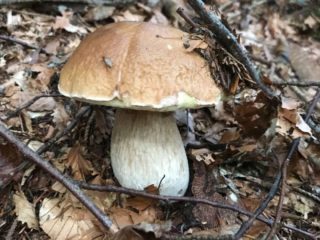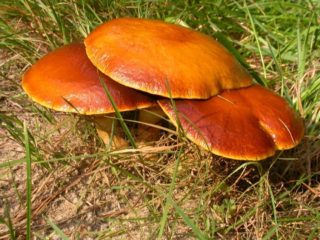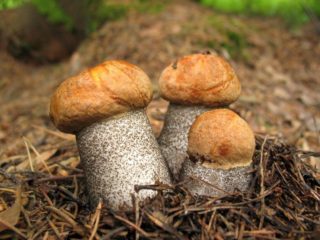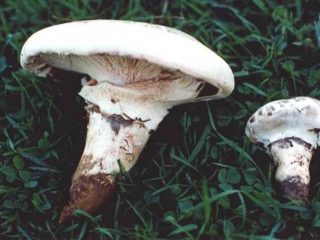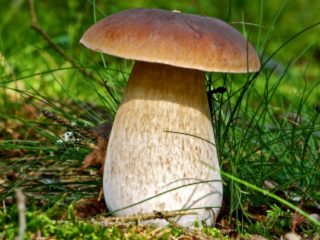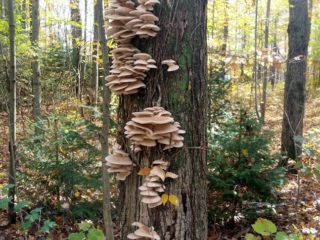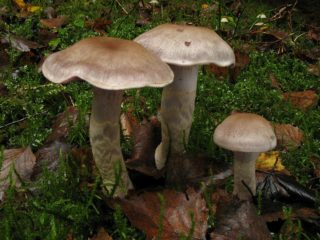Content
The beautiful-legged boletus (lat. Caloboletus calopus or Boletus calopus), also the beautiful or inedible boletus is a fairly common mushroom, which is distinguished by the bright color of the leg. As the name of the species suggests, the fruiting bodies should not be eaten.
What beautiful-legged boletes look like
The cap of the beautiful-legged boletus can grow up to 6-14 cm in diameter, while in appearance it is completely inconspicuous, which strongly contrasts with the bright stem of the mushroom. Its color varies from grayish-olive to light brown. The cap is smooth to the touch, but matte and dry. In young specimens it has the shape of a hemisphere, however, in mature boletes it opens up and becomes convex.The edges of the cap curl downward as the fruiting body grows.
The hymenophore of the beautiful-legged boletus is light yellow at the first stage of development, then it acquires an ocher color.
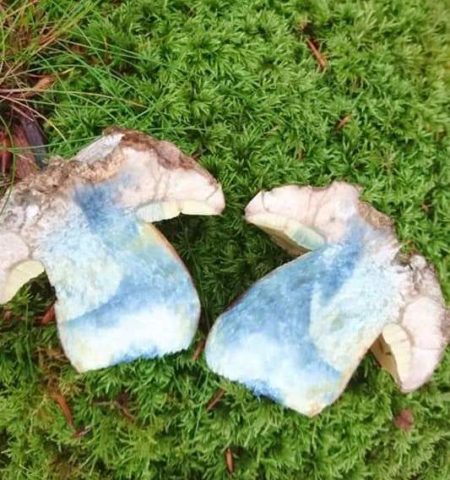
When cut, this species turns blue within 5-8 minutes.
The spores of the fungus are brownish-olive.
The stem of the boletus has the shape of a barrel in young mushrooms. At the next stage of development, it becomes club-shaped, and in mature specimens it acquires a cylindrical appearance. The height of the leg is on average 5-15 cm, diameter - 2-5 cm. Under the cap itself it is whitish-yellow, but this color quickly turns into a rich red. In mature boletes, the stem is brownish at the bottom.
The pulp of the fruiting bodies is quite dense, even hard. It is painted in cream shades and does not have a pronounced odor.
Where do beautiful-legged boletes grow?
The distribution area of the beautiful-legged boletus includes coniferous forests of mountainous regions. Most often, small groups of mushrooms can be found near spruce trees. Solitary ones are occasionally found in deciduous and mixed forests.
The preferred type of soil is sandy with a high level of acidity. On the territory of Russia, the beautiful-legged plant grows in southern latitudes.
Is it possible to eat beautiful leg boletes?
The beautiful-legged boletus is an inedible mushroom, however, the reasons for this definition may vary greatly in the reference literature.Some authors note that its pulp does not contain toxic substances, but it should not be eaten because of its strong bitterness. The sharp unpleasant taste does not disappear even after 10 hours of soaking or frying.
Other sources claim that the beautiful leg is poisonous. Toxic components in its pulp can cause severe intestinal upset, convulsions and even loss of consciousness. After some time, the victim begins to develop cirrhosis of the liver.
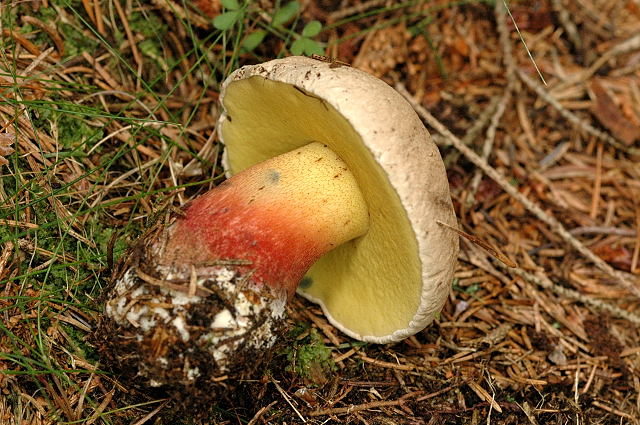
Sometimes there are white streaks on the lower part of the leg (near the ground)
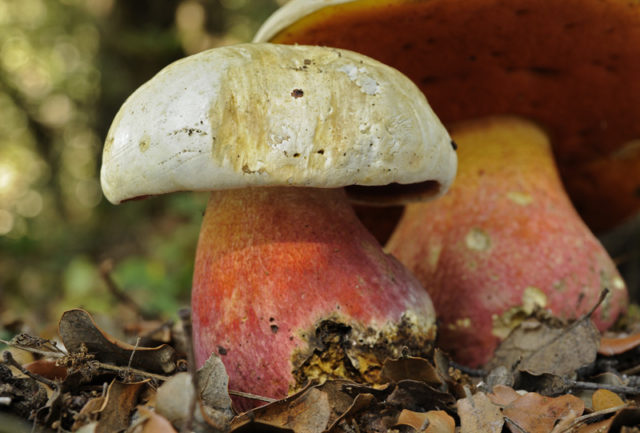
Eating even a small piece of this species can be fatal.
They are distinguished mainly by their spores - in the satanic mushroom they are rich red in color.
Symptoms of poisoning
The first signs of poisoning begin to appear within 2-3 hours after eating the fruiting bodies. Characteristic symptoms include the following changes:
- causeless weakness, trembling in the hands;
- dizziness;
- nausea, vomiting;
- diarrhea (sometimes with blood);
- Strong headache;
- convulsions;
- muscle pain.
If a large amount of toxic substances enters the body, it can lead to loss of consciousness.
First aid for poisoning
Before doctors arrive, first aid is provided through gastric lavage.For these purposes, use 2-3 tablets of activated carbon or a small amount of Enterosgel, the dosage of which is calculated taking into account the person’s weight.
It is also necessary to artificially induce vomiting in the victim - to do this, he is given a glass of soda solution diluted in the proportion of 1 tsp. for 0.5 liters of water.
Conclusion
Despite its attractive appearance, it is impossible to collect beautiful-legged boletus - the mushroom is inedible and even poisonous, according to some sources. Opinions about the toxicity of this disease differ among different authors, however, everyone notes the strong bitterness in the pulp of the fruiting bodies. It is impossible to get rid of it even after prolonged soaking and heat treatment.
The danger of the beautiful-legged boletus also lies in the fact that an inexperienced mushroom picker may confuse some edible varieties with it. If you have the slightest suspicion that the find is a poisonous mushroom, you should leave it alone.
You can learn more about what the beautiful-legged bolete looks like from the video below:

